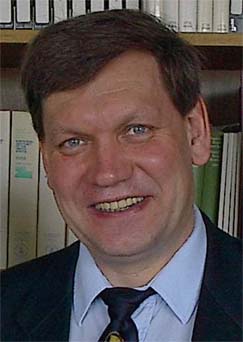'American Scientist' Story on Aging & Longevity
Greetings,
Recently the American Scientist Magazine has published an interesting story "The Undiscovered Country" on aging and longevity topic, where our research studies and findings are also discussed:
The article contains bibliography of eight references, starting with our two publications:
Gavrilov, L. A., and N. S. Gavrilova. 1991. The Biology of Life Span: A Quantitative Approach. New York: Harwood Academic Publishers. http://tinyurl.com/2am4l3
Gavrilov, L. A., and N. S. Gavrilova. 2002. Evolutionary theories of aging and longevity. The Scientific World Journal 2:339-356. http://longevity-science.org/Evolution.pdf
This story is written by Dr. Robert L. Dorit, who is an associate professor in the Department of Biological Sciences at Smith College. His work focuses on experimental evolution of molecules and bacteria, and on the design of novel antibiotics. Address: 435 Sabin-Reed Hall, Clark Science Center, 44 College Lane, Northampton, MA 01063. E-mail: rdorit(at)smith.edu
This American Scientist paper published in the "MARGINALIA" section of the magazine is concluded in the following, perhaps questionable way:
We feel that the area of aging research is more mature than described in this article (see Gavrilov, Gavrilova, 2006a), and the opportunities for delaying aging in our lifetime are better than the author believes (see Gavrilov, Gavrilova, 2006b). We agree however, that only the future will tell who is right.
Read More Here
American Scientist
To read comments on this story, and to post your own thoughts, click here
Key words:
American Scientist,Aging, American Scientist Magazine, Longevity,Leonid Gavrilov, Natalia Gavrilova, System Redundancy, Mortality, Biology of Life Span, Robert Dorit, Robert L. Dorit
Home:
Longevity Science Blog
and
'American Scientist' Story on Aging & Longevity
Shorter weblink:
http://tinyurl.com/2equ4z
.
Recently the American Scientist Magazine has published an interesting story "The Undiscovered Country" on aging and longevity topic, where our research studies and findings are also discussed:
"... as University of Chicago gerontologists Leonid Gavrilov and Natalia Gavrilova have argued in their influential book The Biology of Life Span: A Quantitative Approach, the very redundancy that permits complex systems to endure a constant rain of light damage also allows such damage to accumulate, resulting in aging and eventual failure. Surprisingly, the higher the level of redundancy, the faster the force of mortality accelerates with age."
The article contains bibliography of eight references, starting with our two publications:
Gavrilov, L. A., and N. S. Gavrilova. 1991. The Biology of Life Span: A Quantitative Approach. New York: Harwood Academic Publishers. http://tinyurl.com/2am4l3
Gavrilov, L. A., and N. S. Gavrilova. 2002. Evolutionary theories of aging and longevity. The Scientific World Journal 2:339-356. http://longevity-science.org/Evolution.pdf
This story is written by Dr. Robert L. Dorit, who is an associate professor in the Department of Biological Sciences at Smith College. His work focuses on experimental evolution of molecules and bacteria, and on the design of novel antibiotics. Address: 435 Sabin-Reed Hall, Clark Science Center, 44 College Lane, Northampton, MA 01063. E-mail: rdorit(at)smith.edu
This American Scientist paper published in the "MARGINALIA" section of the magazine is concluded in the following, perhaps questionable way:
"Ultimately, what does it suggest to have so many competing theories of death? I would argue it is the hallmark of a vibrant field, one in its early phases. The many explanations jostle and compete, driven by our shared belief that death may be inevitable, but it is not incomprehensible. The identification of genes involved in determining lifespan, the demonstration that lifestyle and environment can delay death, the technologies that extend life -- all fuel our fascination with the topic. But the aging population in the developed world (including its scientists) also propels the field. In the end, however, if our real motivation is to loosen death's grip on humanity, we need to go beyond a material understanding of the biology of aging, lifespan and death. Most of humanity still does not die of old age, "sans teeth, sans eyes, sans taste, sans everything," as Jaques laments in As You Like It. Instead, most of humanity dies young, of preventable causes brought about by poverty and unequal access to health care. Any account of the causes of death that focuses solely on biology without considering the social and economic settings in which our biology plays out is at best incomplete, and at worse, misguided. Over my lifetime, cheating death may not be about tricking the limits of our biology, but instead about changing how we live our lives."
We feel that the area of aging research is more mature than described in this article (see Gavrilov, Gavrilova, 2006a), and the opportunities for delaying aging in our lifetime are better than the author believes (see Gavrilov, Gavrilova, 2006b). We agree however, that only the future will tell who is right.
Read More Here
American Scientist
To read comments on this story, and to post your own thoughts, click here
Key words:
American Scientist,Aging, American Scientist Magazine, Longevity,Leonid Gavrilov, Natalia Gavrilova, System Redundancy, Mortality, Biology of Life Span, Robert Dorit, Robert L. Dorit
Home:
Longevity Science Blog
and
'American Scientist' Story on Aging & Longevity
Shorter weblink:
http://tinyurl.com/2equ4z
.
Labels: aging, American Scientist, American Scientist Magazine, Biology of Life Span, Leonid Gavrilov, longevity, mortality, Natalia Gavrilova, Robert Dorit, Robert L. Dorit, System Redundancy



1 Comments:
This is very usful to all scientists thanks for this entry.
Post a Comment
<< Home